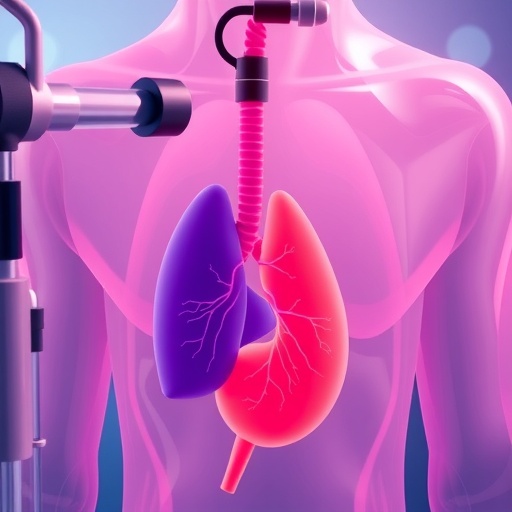
In an innovative study led by Hernandez et al., a deep dive into the intersection of mathematics and biomedical engineering emerges with a focus on how mathematical concepts are not just theoretical constructs, but vital tools used in real-life biomedical settings. The findings of this research illuminate the profound impact of mathematical modeling and analysis on the field of biomedical engineering, reshaping how we perceive and teach calculus, particularly in introductory courses.
At the heart of this research lies the realization that mathematics is more than mere numbers and equations; it serves as a foundational element that can drive advancements in medical technologies and treatments. The study compares traditional instructional methods against a newly developed Supplemental Applications Curriculum (SAC) designed to engage students by integrating real-world applications of calculus in biomedical engineering. The SAC approach strives to contextualize complex mathematical theories into relatable scenarios that students may encounter in their professional lives.
Exploring the implications of this curriculum, the research highlights critical case studies where calculus has played a pivotal role in the success of biomedical engineering solutions. For instance, the application of differential equations in modeling drug dosage and release profiles in the human body illustrates the necessity of precise mathematical understanding in effective healthcare delivery. Such modeling techniques not only enhance drug efficacy but also optimize patient safety.
Moreover, the study outlines the need for improved pedagogical strategies that actively cultivate both performance and motivation in students. The incorporation of real-life examples significantly alters the learning landscape, transforming what might have been abstract concepts into intriguing puzzles that demand critical thinking and problem-solving skills. By doing so, the SAC has shown promise in bridging the gap between theoretical knowledge and practical application.
Motivation is another critical factor considered in this research. Students often struggle to see the relevance of calculus in their future careers. The SAC addresses this by embedding engaging scenarios—such as the mathematical modeling of heart rate dynamics and medical imaging technology—into the curriculum. This strategy not only piques students’ interest but also fosters a deeper connection between their studies and their potential professional roles.
The comprehensive exploration of student performance revealed measurable improvements in both understanding and retention of calculus concepts. By applying mathematics to tangible biomedical challenges, students reported heightened confidence in their abilities, setting a new benchmark for educational success in this domain. This improved attitude towards mathematics is crucial as students transition into more advanced engineering subjects.
Additionally, the authors emphasize the collaboration between educators and industry professionals to curate more applicable case studies. Such partnerships can ensure that learning materials remain current and relevant, reflecting the fast-evolving field of biomedical engineering. Authentic experiences shared by professionals could serve as inspiring anecdotes that energize students and provide clarity on the application of their studies.
Furthermore, the implications of this study extend beyond the realm of academia; they reach into policy-making and curriculum development. Educational institutions are often trapped in cycles of outdated teaching methodologies that fail to inspire the next generation. By showcasing the effective use of mathematics in real-world biomedical applications, this research encourages educational reform that prioritizes practical knowledge and skills across STEM fields.
The collaborative climate fostered within this curriculum also plays a critical role. Students are encouraged to work in teams, mirroring real-world biomedical engineering projects where interdisciplinary collaboration is essential for innovation. Building soft skills like teamwork and communication complements the technical knowledge, producing well-rounded professionals who can thrive in diverse workplace environments.
In conclusion, Hernandez et al.’s research delineates a novel approach to integrating mathematics within biomedical engineering education, spotlighting the real-life implications of calculus in enhancing student engagement and performance. By advocating for a curriculum that emphasizes practical applications, educators can motivate learners, ultimately leading to a new generation capable of tackling future challenges in healthcare with mathematical prowess and innovative thinking.
This empirical exploration serves not only as a guide for current pedagogical practices but also as a clarion call to educational bodies to reconsider how crucial mathematics is to the biomedical engineering curriculum. The future of healthcare will demand professionals who are not just adept in their technical skills but are also critically engaged thinkers, capable of leveraging mathematics to push the boundaries of what is possible in patient care and medical technology.
As industries continue to evolve towards more complex technologies, the necessity for a robust foundation in mathematics is clearer than ever. With insights drawn from this study, educators stand poised to redefine curricula, inspiring students to embrace mathematics not simply as a subject, but as an essential tool for innovation in the biomedical landscape.
By intertwining real-world application with education, Hernandez et al. lay down a template that future research can build upon. The conversation about mathematics in biomedical engineering is far from over; instead, it has taken on a life of its own, driven by the needs of students and the realities of the professional world.
Overall, this groundbreaking research posits that integrating practical mathematical applications into learning environments could be the key to unlock a wave of innovation and improved educational outcomes in the biomedical engineering sphere. As institutions adopt these findings, the landscape of STEM education may be on the cusp of transformative change, streamlined to create the leaders of tomorrow in the biomedical field.
Subject of Research: Real-Life Applications of Mathematics in Biomedical Engineering
Article Title: Real-Life Examples of Mathematics Used in Biomedical Engineering Research: The Effect of Supplemental Applications Curriculum on Performance and Motivation in an Introductory Calculus Course.
Article References:
Hernandez, J.L., Branch, E. & Sobhi, H.F. Real-Life Examples of Mathematics Used in Biomedical Engineering Research: The Effect of Supplemental Applications Curriculum on Performance and Motivation in an Introductory Calculus Course. Biomed Eng Education (2025). https://doi.org/10.1007/s43683-025-00177-7
Image Credits: AI Generated
DOI:
Keywords: Mathematics, Biomedical Engineering, Curriculum Development, Educational Strategies, Student Engagement, Real-World Applications, Pedagogy.
Tags: Advancements in Medical Technologiesbiomedical engineering applicationsCase Studies in Biomedical EngineeringContextual Learning in STEMDifferential Equations in HealthcareEngaging Math Curriculum Designinnovative teaching methodsIntroductory Calculus Outcomesmathematical modeling in medicineReal-World Math IntegrationSupplemental Courses in CalculusTeaching Strategies for Calculus




